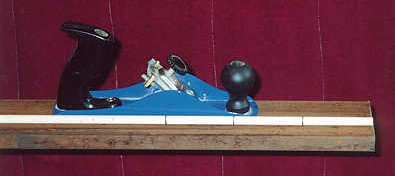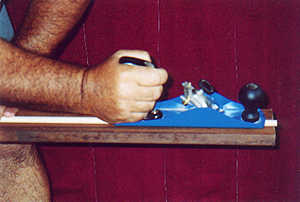
A single tapered shaft is a parallel shaft of say 11/32 or 23/64 and the last 9 inches has been tapered down to 5/16 of an inch on the nock end. Where as a barreled shaft has had both ends tapered to 5/16 of an inch 9 inches from each end.

If you have shafts that are too heavy in their parallel form tapering is one way of reducing the mass weight without sacrificing any more than one or two lbs of spine. But that's static spine as measured on a spine tester but when you reduce the mass weight of a shaft the lighter shaft will shoot stiffer when being shot through the bow that is because the mass weight of the arrow has been reduced so therefore there is less bend in the shaft while being propelled forward by the string, this is referred to as dynamic spine which is a term that is little heard of and understood by many archers. So to put this into perspective when you taper the shaft by reducing the mass weight you will loose static spine but the dynamic spine will increase so everything should stay the same. If you are shooting a bow that has not had the shelf cut past centre than you need a shaft that is somewhere between 5 to 15lbs under the bow weight but that will be determined bow the particular bow.
To start the tapering process first cut your shaft to length and starting from the end of the shaft mark with a lead pencil a three inch mark a six inch mark and then a nine inch mark (fig.1.) make sure that you carry all of the marks right around the shaft.(fig.2.)

After the planning process sand with medium and fine sandpaper to remove any tool marks and make up as you would a normal arrow. (fig.3.) I have found by barreling a shaft that approximately 50 grains of weight are lost and about 5 lbs. of spine is also lost. But I wouldn't be worried about the 5lbs of spine weight because the mass weight has also been reduced and that means that the dynamic spine that is the amount of bend that the arrow takes as it is being shot through the bow is increased because there is less mass weight to be propelled by the string so therefore the arrow will shoot stiffer through the bow. So in short what I am saying is that a 550 grain 55lb shaft will bend the same amount as a 500 grain 50lb shaft when being shot through the same bow.
